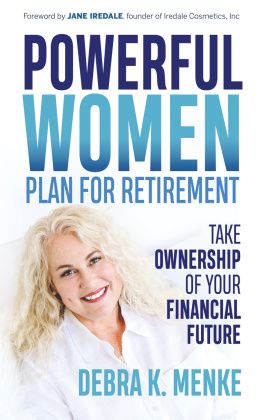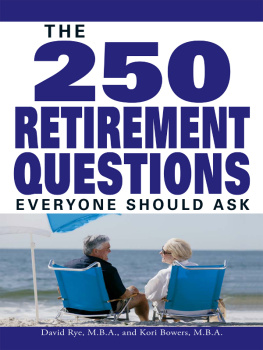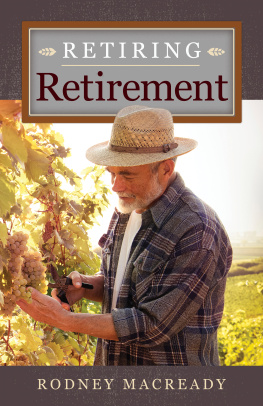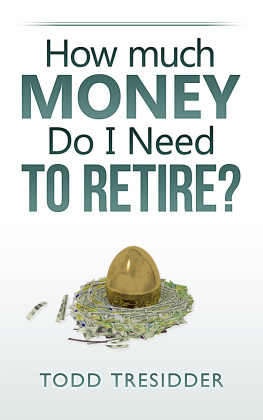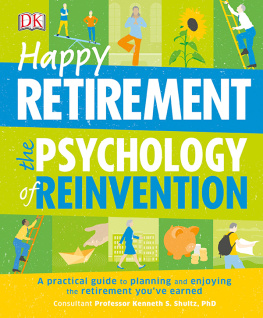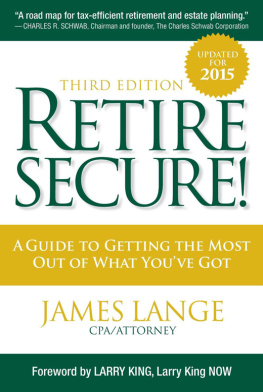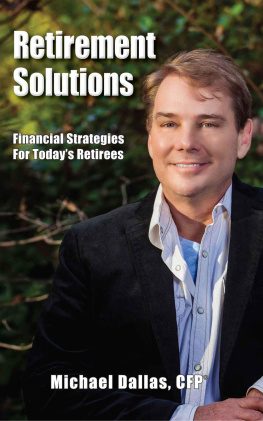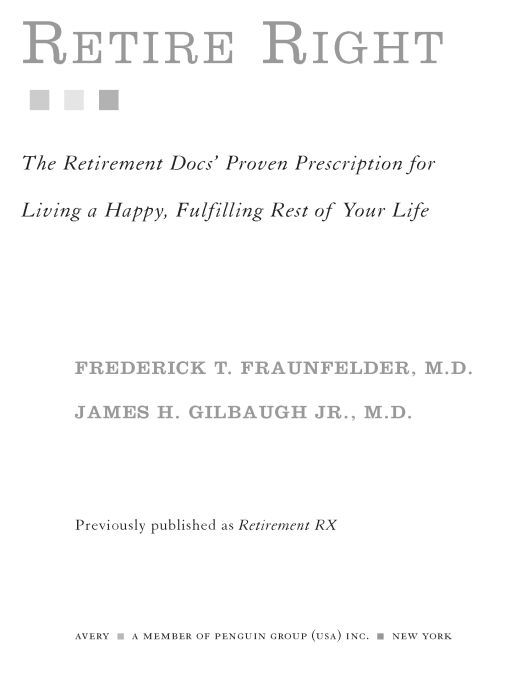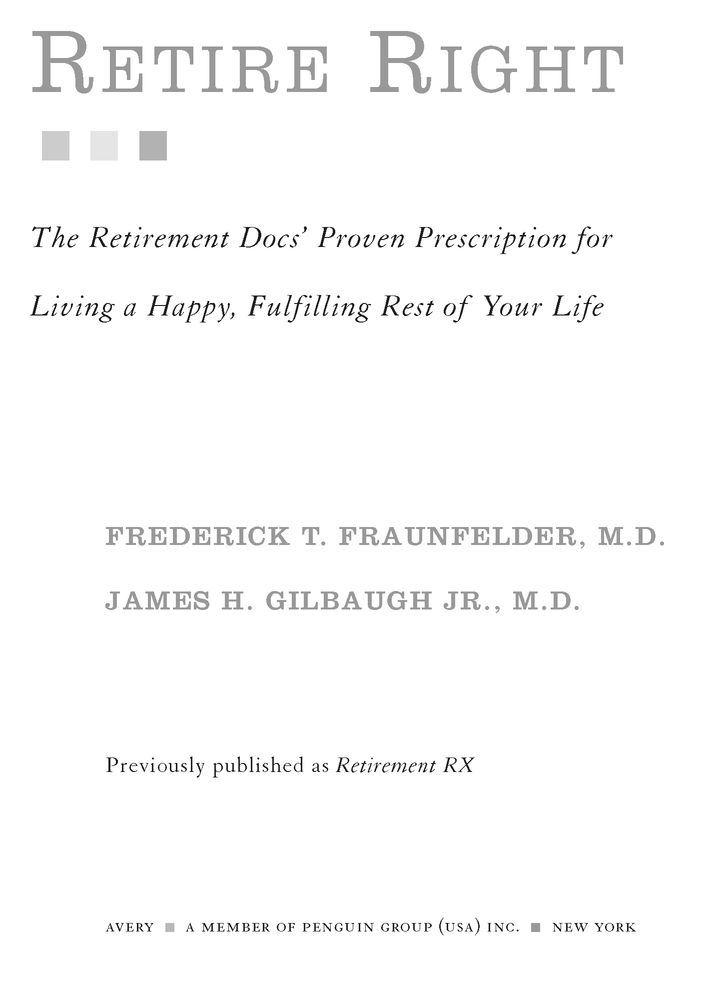Table of Contents
To our wives,
Yvonne and Marilyn,
Our families, our teachers, and our patients
ACKNOWLEDGMENTS
We have to acknowledge the game of golf! It was on the tee box of the ninth hole about six years ago that the moment of conception for our book took place. Dr. Fritz, aka the planner, had taken a sabbatical from academic medicine. During that time he read everything he could on the nonfiscal side of retirement but wasnt satisfied with the information available to him. Dr. Jim, aka the feeler, was semi-retired, thinking about his future and loaded with ideas on how he wanted to live it. We shared our thoughts with wives, families, and friendsthus the book was born.
Early thoughts and brainstorming were done with Charlie Allis, Bill Countant, Tom Cummins, Dick Cunningham, David Duxbury and Nancy Fletcher, Jack Faust, Joe Ferguson, Betty and John Gray, Britt Hayes, Jackie and Jerry Inskeep, Dan Isaak, Jack Johnston, Jan and Bob Kalina, Meritt Linn, Jim Maletis, Ruth and Joe Matarazzo, Ron Mehl, Courtland Mumford, Margaret Beth Neal, Frank OConner, Jim and Shirley Rippey, George Saslow, Alice Scannell, Gary Stewart, Fred and Pat Stickel, Ken Swan, Ann and Bill Swindell, Lou Terkla, Joan and Fred Thompson, and Ted Vigeland.
Early encouragement from Ken Blanchard, Eric Bollinger, Joe Hayes, Ed Pit tock, and Betsy Vierck was important to us.
Many helped proof the book and came up with excellent suggestions, including Sigrid Button, Clem Connolly, Michael Gourley, Joanne Henry, Steve Kelley, Howard Lincoln, Patricia Robertson, Mollie Suits, Richard Uren, and Werner Zeller.
The staff at the Casey Eye Institute at Oregon Health & Sciences University in Portland, Oregon gave supportStephanie Lyons, Kelly Medlar, Nancy Mitchell, Joan Randall, Jeannine Ransome, Joe Robertson, Bree Vetsch, and Dave Wilson. We cant forget about our golf partners, who had to hear about, get quizzed, and have ideas bounced off them between erratic shots: Ernest Blatner, Dennis Dahlin, Al Henry, Fred Nomura, Dick Newman, and George Wells.
Our patients who gave their heartfelt time, talent, and ideas filling out lengthy questionnaires that became the basis of this book get extra credit. We owe big-time to Marilyn Gilbaugh, who is the voice of this book and made it what it is.
Our thanks to Jean Naggar and Mollie Glick of the Jean V. Naggar Literary Agency Inc., New York, our agents, for their guidance, suggestions, and help. To Karen Kelly for her amazing organizational skills. She truly was our book doctor. And to Lucia Watson of Avery, Penguin Group USA, New York, for her understanding and expertise.
INTRODUCTION: HURRY UP, YOUR LIFE IS WAITING
As doctors with subspecialties in geriatrics, we have seen many patients on the brink of, just starting, or deeply into their retirement years. Their widely varied responses to this time and its challenges are remarkable. Some rise to new heights, whereas others seem ready to heave a heavy sigh, sag into a rocking chair, and settle in for good. For instance, one patient, Joanne, a recently retired real estate agent, told us her post-work life remained the same as it was while she was selling property. The only real difference was the gift of time that retirement had given her. She was now able to indulge in a midmorning haircut or spa treatment, linger over lunch, spend extra time browsing in the library or bookstore, or take her grandchildren or just herself to an afternoon matinee, all activities that she previously had time only for in the evening or on weekends. She considered this luxury truly golden.
When we compared Joannes outlook to that of another patient, Brian, a man who had enjoyed a successful advertising career, we saw a dramatic difference. He could find little to enjoy about his retirement and went so far as to say that he had lost much of the pleasure of living! Even leisure activities that, as a working person, he had enjoyed participating in with his wife now held little interest for him, including dinner parties, cribbage competitions, or simply discussing current events with his spouse. Some of his withdrawal, Brian admitted, came from his increasing forgetfulness, which both scared and embarrassed him. But what bothered him most of all was spending so much time by himselfa situation he had rarely found himself in when he worked. Still, he lacked the will and the gumption to get out and get on with his life. He felt lost and without direction.
What makes one person embrace the second half of life, while another seems only capable of withdrawing from it? Why did some of our patients manage to maintain the vitality that had marked their working years while others failed to make the transition? We wanted to find some information about happy retirees that would assist our patients who were finding retirement a rough go. Exploring bookstores, libraries, and the Internet, we were relentless in our search for retirement advice. Most books we found focused on financial planning, and those that didnt were anecdotalfilled with standard recommendations to eat well, get enough sleep, and exercise. Good suggestions but too general and unscientific for our needs.
The search continued in our own practices: we began to look at our patients to identify with clinical certainty the skills, habits, and characteristics associated with people who experienced what we observed to be productive, well-adjusted, or successful retirements, which we define as richly endowed with good health, loving relationships, outside interests, and, most important, the resilience and wisdom to graciously accept the inevitable, which is lossof family, friends, loved ones, health, memory, and, ultimately, life.
We wanted to collect accurate data, so we created and conducted a professionally designed survey. More than fifteen hundred of our patients were asked to anonymously fill out what we had come to call The Retirement Docs Survey. It was the first time that a survey such as this had centered on retired people and their insights. The questionnaire consisted of multiple choice and essay questions, which took anywhere from an hour to an hour and a half to complete. The return rate was an unheard-of 72 percent. Our respondents replied candidly and often at lengththeir essays running the gamut from succinctly matter-of-fact to lengthy and deeply emotional, from warmly positive to grimly negative.
As you can imagine, we had amassed a tremendous amount of original research and strong data. We used well-established, controlled research and analysis methods to study the results, including assistance from a local universitys gerontology statistics department. After our first look at what we had gathered, we realized that retirement success is not related to gender, marital status, children, hobbies, or grandchildren. Highly successful retirees come from all walks of life, from stay-at-home moms to corporate leaders, from astronauts to cab drivers, from people forced to retire because of office politics or poor health to those who couldnt walk away from the nine-to-five treadmill.
From the initial sorting, the statisticians identified four distinct phases of retirement, and nearly eighty traits that successful retirees shared. Those findings were then further distilled, which led us to identify eight specific traits that had the greatest statistical significance and were shared by all of the top 20 percent respondents in the Retirement Docs Survey.


